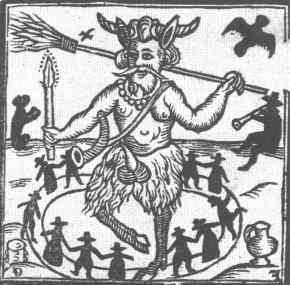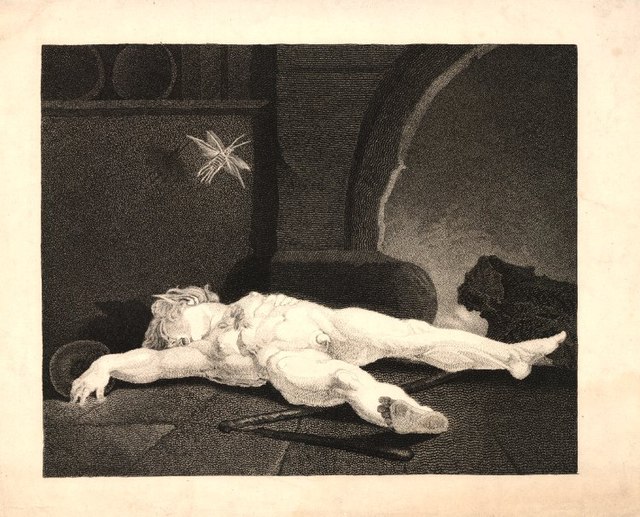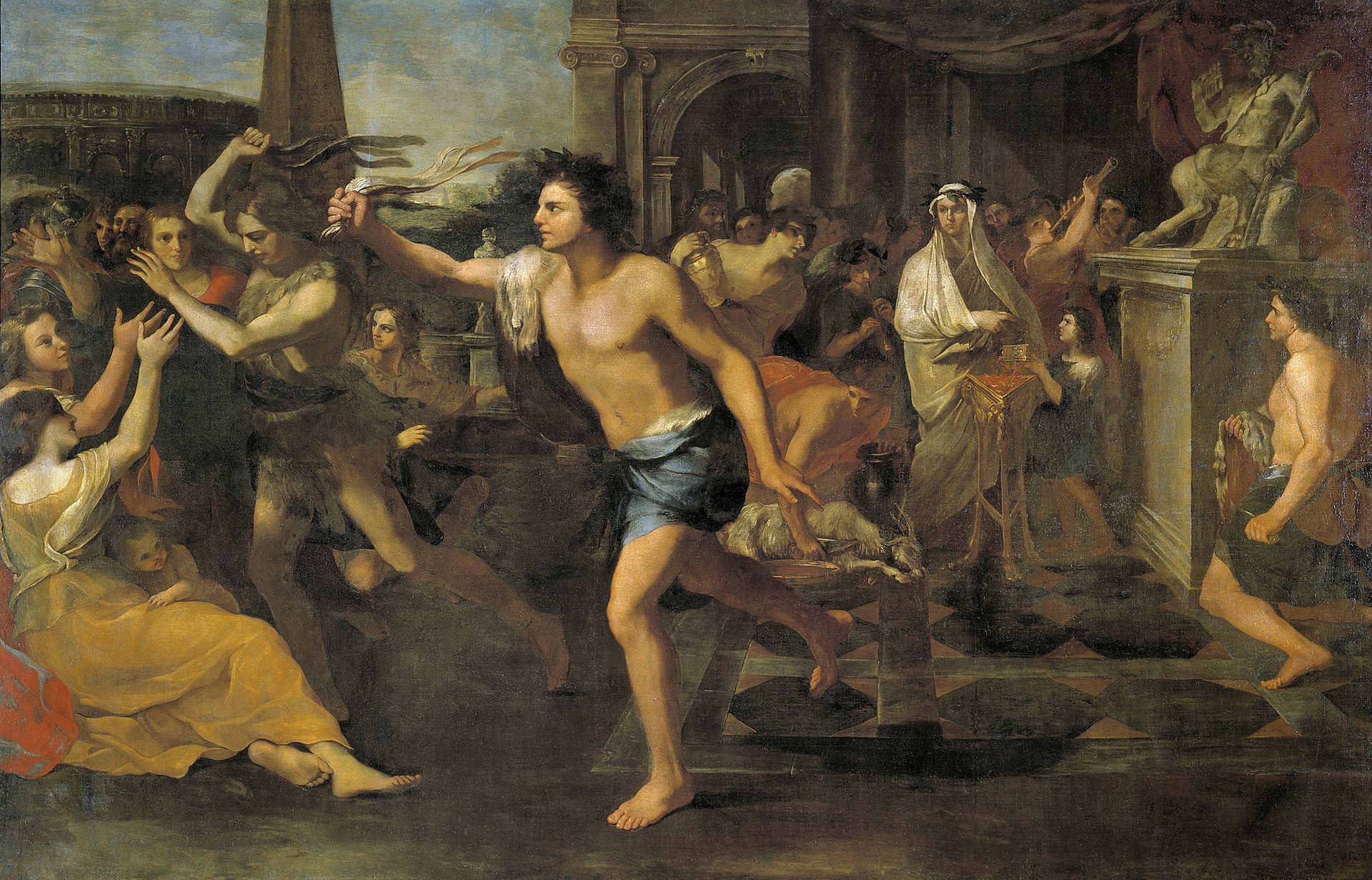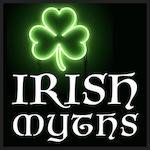Irish Myths is reader-supported. When you buy through links on our site, we may earn a small affiliate commission.
The word leprechaun was first recorded in the English language in 1604 by way of a Thomas Dekker-penned comedy. Granted, in the comedy, it’s a variant spelling: lubrican.
Here’s the passage in which it appears:
“As for your Irish lubrican, that spirit / Whom by preposterous charms thy lust hath rais’d / In a wrong circle.”
Now, one might assume that the lubrican spelling is merely a corruption of the word leprechaun, a word that undoubtedly originated in the Irish language…right?
Thomas Keightley, for one, had his doubts. Indeed, he believed the word originated in the exact opposite fashion: starting in England and becoming corrupted in Ireland.
I know, I know. The gall of that man.
Pssst. You can watch a video summary of this article here. (Text continues below.)
Keightley’s etymology
Keightley pointed to a number of literary examples to help bolster his claim that leprechaun/lubrican was of an English (or at least, non-Irish) origin, including Shakespeare’s A Midsummer Night’s Dream (first published in 1600), in which Puck—a mischievous sprite—is referred to as “Thou Lob of spirits.”

Then there’s a reference to a “Lob Lie-by-the-fire” in Francis Beaumont and John Fletcher’s play The Knight of the Burning Pestle first published in 1613.
And of course there’s the “lubber fiend” from Milton’s poem L’Allegro, first published in 1645.

Finally, in John Gay’s book of poems The Shepherd’s Week. In Six Pastorals, published in 1714, we’re introduced to Lubberkin the cattle-driving clown.
Taken altogether, what do we get?
Here’s how Keightley explained it in his 1828 book, The Fairy Mythology:
“This might lead us to suppose that Lob, whence loby (looby), lubbard, lubber, and adding the diminutive kin, Lubberkin…was an original name of some kind of spirit. We shall presently see that the Irish name of the Leprechaun is actually Lubberkin. As to the origin of the name we have little to say, but it may have had a sense the very opposite of the present one of lubber, and have been connected with the verb to leap.”
Now, here’s where Keightley took a leap. Because he asserted that in Irish, the aforementioned spirit is known as the Lobaircin. And in his estimation, “it would not be easy to write the English Lubberkin more accurately with Irish letters and Irish sounds. Leprechaun is evidently a corruption of that word.”
Hyde’s etymology
Keightley’s etymology of leprechaun would eventually be supplanted by a new etymology, one popularized by a one Mr. Douglas Hyde, who, in addition to being a linguist and folklorist, was (checks notes) the first president of the Republic of Ireland.
To quote Hyde:
“The name Lepracaun is from the Irish leith brog—i.e., the One-shoemaker, since he is generally seen working at a single shoe. It is spelt in Irish leith bhrogan, or leith phrogan, and is in some places pronounced Luchryman.”
source: Fairy and Folk Tales of the Irish Peasantry:
No, there is nary a “lob” or “lub” to be found in this assessment of the word. That being said, the “single shoemaker” etymology of leprechaun is now widely considered to be a folk etymology—meaning it was applied retroactively to the term in an attempt to create alignment with what was known about leprechauns in popular folklore.
And while the term leithbrágan was recognized as an alternate spelling of leprechaun in O’Reilly’s Irish-English Dictionary, first published in 1817, John O’Donovan’s 1864 supplement to that same dictionary preferred the spellings lupracán, lugharcán, and lugracán.
Ellis’ etymology
Those last two spellings are especially significant because they seem to contain within them the name of the Irish god of many talents, Lugh, a cognate of the Gaulish Lugus and the Welsh Llew.
And if Peter Berresford Ellis is to be believed, this god Lugh is quite literally the original inspiration for the leprechaun, both in name and form. Here’s Ellis’ explanation, courtesy of his A Dictionary of Irish Mythology:
“When the old gods were driven underground, Lugh was given the sídhe of Rodrubán by the Dagda. Over the years this mighty god’s image diminished in popular folk memory until he became simply a fairy craftsman named Lugh-chromain, ‘little stooping Lugh’, which became Anglicised as Leprechaun. The leprechaun is now all that survives of this potent patron of arts and crafts whose name is remembered in the place names of many lands, not just Ireland: Lyons, Leon, Loudan and Laon in France, Leiden in Holland, Liegnitz in Silesia and Carlisle (Luguvalum in in Roman times) in England as well as London which, like Lyons, was named the ‘fortress of Lugh’—Lugdunum, hence the Latin Londinium and London.”
Catch all that?
All of those places. Named for that one Celtic god.
And that same god, allegedly, inspired the invention of one the world’s most famous little fiends.

Ooor maybe what we’re dealing with here is a case of a mythological etymology. Much like the aforementioned folk etymology, it’s possible that this meaning (and spelling) of leprechaun was applied retroactively to reference the god.
Because there are, in fact, lots of other etymological theories out there pertaining to the word leprechaun—some of which, perhaps, align a bit more closely with the principle of Occam’s razor.
The most likely etymologies of “leprechaun”
According to issue 256 of the Revue Celtique, the “true etymology” of the word leprechaun is that it comes from the Old Irish luchor pan, meaning “little man.”
Simple.
Likewise, Whitley Stokes interpreted leprechaun to mean “small body,” arguing it was a compound word comprised of the Greek root lú or laghu (“small”) and the Latin corpus (“body”).
The latest theory, published in the journal Cambrian Medieval Celtic Studies, also points to a Classical etymology for leprechaun.
Authors Jacopo Bisagni et al begin their paper by pointing out that the earliest ever written appearance of the word leprechaun can be found in the Lebor na hUidre (Book of the Dun Cow), an Irish vellum manuscript that dates to the 12th century.
And while in that manuscript the word is spelled lucrupan, that was only on the scribe’s second attempt at writing the word. To quote Bisagni:
“Scribe A of Lebor na hUidre initially wrote <luprucan>, but later added c over p, and p over c, as if wishing to emend <luprucan> to <lucrupan>.”
So, why does this little spelling fluctuation matter so much?
Because if we know the word for leprechaun was originally luprucan, it makes it easier to see how that word could have entered the Irish language via the Latin Luperci.
The Luperci were essentially the stars of the Ancient Roman pastoral festival Lupercalia, held annually on February fifteenth. They were a priesthood, comprised of young(ish) men, who would run naked or nearly naked around Rome‘s Palatine Hill, striking those they encountered with thongs.
No, not that kind.
Or those kinds.
In this case, the thongs, known as februa, were narrow strips of flayed skin that they took from the animals they sacrificed.
Fun!

Now, what does any of this have to do with leprechauns?
Absolutely nothing.
That is, until St. Augustine of Hippo compares the Luperci to Greek werewolves in the fifth century C.E.
See, the werewolves are said to transform from man to wolf after taking a dip in a lake, and the point St. Augustine was trying to make was that the Luperci priests were similarly wild. On Lupercalia, they transformed. What’s more, their name, Luperci, likely means something like “brothers of the wolf.”
But when Irish scholars get their hands on St. Augustine’s writings some two centuries later, something gets lost in translation. To put it lightly.
The Irish scholars think that the Luperci are werewolves, or at least some kind of supernatural race that’s keen on aquatic activities.
Hence, when the scholars hear the tale of three mischievous sprites attempting to drag an Irish king to their home beneath the sea, as detailed in the Echtra Fergusa maic Léti, or the Saga of Fergus mac Léti (a tale that had been passed down orally in Ireland for centuries prior to the arrival of Christianity), at least one of the scholars is reminded of those rascally Luperci St. Augustine had written about two centuries prior.
In addition to dubbing the little beings lúchorpáin, marking the leprechaun’s first significant appearance in Irish mythology, the scholars make up a backstory, reasoning that the “’little Luperci” were able to survive Noah’s Flood and seek refuge in Ireland on account of their being such great swimmers.
Thanks for reading. Stay tuned for my next post, “The Rise of Leprechauns in Popular Culture.”
P.S. Want to meet the real St. Patrick? Check out…
Saint Patrick in Your Pocket
Separate man from myth, fact from folklore, in this small but mighty pocket guide dedicated to uncovering lesser-known facts about Ireland’s most beloved patron saint. Armed with answers to these 20 tantalizing questions, you’ll be the smartest reveler in the room at your next Saint Patrick’s Day party. Learn more…

